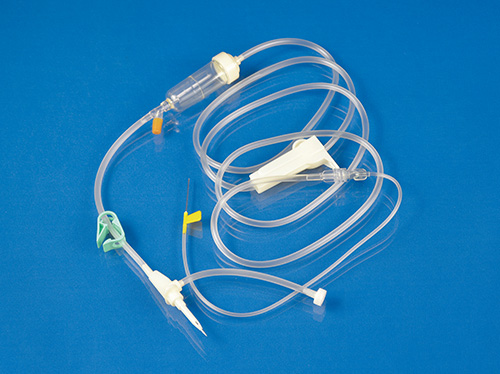Properly Discontinuing IV Fluid Therapy Safely
Intravenous (IV) fluid therapy is a common medical intervention used to administer fluids, medications, or nutrients directly into a patient's bloodstream. However, there comes a time when this therapy must be discontinued, and understanding how to stop IV drip safely is crucial to prevent complications and ensure patient well-being. The decision to discontinue IV fluids typically occurs when a patient has achieved euvolemia, meaning they have returned to a normal body fluid volume, and can maintain adequate oral fluid intake or is being discharged from the hospital.

Reasons for termination
IV fluid remedy and supplemental IV catheters( PIVs) are discontinued for several reasons. Achievement of Euvolemia The most common reason is when the case has recaptured normal fluid balance and can maintain oral hydration. Infection or Complications Signs of infection, infiltration, extravasation, or phlebitis at the insertion point necessitate termination and relief of the PIV. Slated relief PIVs should be replaced every 72- 96 hours in grown-ups to help infection or phlebitis, as recommended by the Centers for Disease Control and Prevention( CDC). Discharge or Change in Therapy Discontinuation may also do if the case is being discharged or if their treatment plan no longer requires IV therapy.
Pre-Removal Assessment
Before discontinuing IV fluids and removing the PIV, a thorough assessment is essential. Hand Hygiene Perform proper hand hygiene to minimize infection risk. Case Identification corroborate the case's identity using two independent identifiers, similar as name and medical record number. Review Medical Records Assess the case's fluid volume status, including input/ affair records and laboratory results, to confirm that IV remedy is no longer needed. Drug Review Check current drug orders to insure no ongoing need for IV access. Risk Assessment estimate the case's threat for bleeding complications, similar as bleeding diseases or anticoagulant therapy.
Junking Procedure
The junking of a PIV should be done precisely to avoid complications Prepare inventories Gather necessary accoutrements like reek, tape recording, or a Band- Aid. Fix the IV Place the IV clamp in the" off" position to help fluid flow. Remove Dressing Loosen the transparent dressing and tape recording around the IV site. Remove the Catheter Place a reek pad over the point and gently pull the IV out parallel to the skin in a slow, steady motion. Apply Pressure Hold pressure on the point for 2- 3 twinkles, or longer if the case is on anticoagulants. check and Dispose insure the catheter is complete and dispose of it properly. Secure the point Apply a Band- Aid or tape recording over the reek pad formerly bleeding has stopped.
Post-Removal Care
After removing the PIV, it's pivotal to cover the case for any signs of complications Assess for Infection Check the point for greenishness, swelling, warmth, tenderheartedness, or purulent drainage. Case Education Educate the case on maintaining acceptable hydration and feting signs of infection. Attestation Document the procedure and any findings in the case's medical record.
Safety Measures
To insure patient safety during and after the procedure Fall Prevention insure the room is clear of obstacles, and the bed is in a safe position. Call Light Accessibility insure the call light is within reach. Side Rails Secure side rails to help falls. In conclusion, discontinuing IV fluid remedy requires careful assessment, proper fashion, and thoroughpost-procedure care to insure patient safety and help complications. By following these guidelines, healthcare professionals can safely manage the termination of IV remedy, promoting optimal case issues. See more: https://www.linkedin.com/company/kangyi
